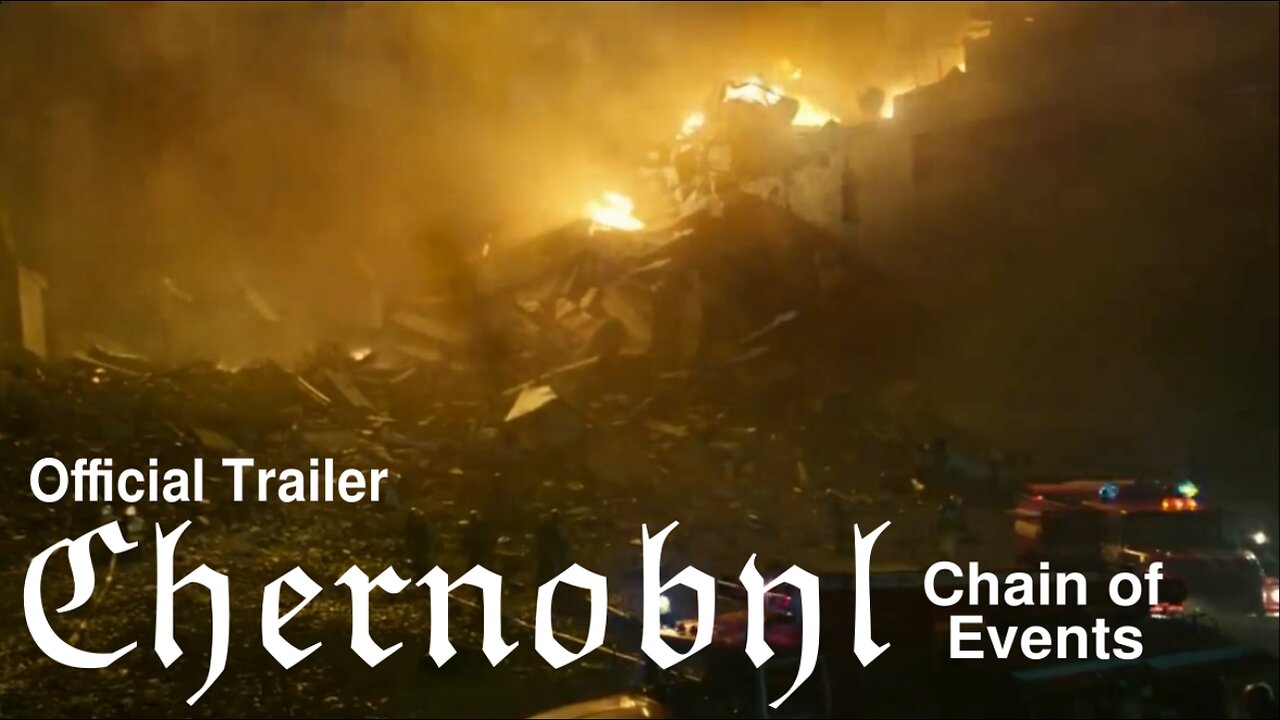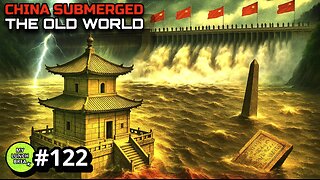Premium Only Content

Chernobyl - Trailer
🌟👉🏻 More Chernobyl Videos: 👈🏼 🌟
Chernobyl - Lies Paid For with the Truth - The Cost of Cover Up - Part 1 of 4
https://rumble.com/v2qcmeo
Chernobyl - How Does a Nuclear Reactor Explode? - Part 2 of 4
https://rumble.com/v2qco5a
Chernobyl - Just Following Orders - Trust the Experts - Part 3 of 4
https://rumble.com/v2qd08g
Chernobyl - The Truth Costs - The Price Paid for Speaking Out - Part 4 of 4
https://rumble.com/v2qd2du
****************************************************************************
The entire minseries is spread out over five, one hour long episodes.
A good binge watch.
Official Site
https://www.hbo.com/chernobyl
IMDB
https://www.imdb.com/title/tt7366338/
****************************************************************************
The Chernobyl disaster was a nuclear accident that occurred
on 26 April 1986 at the No. 4 reactor in the Chernobyl
Nuclear Power Plant, near the city of Pripyat in the north
of the Ukrainian SSR in the Soviet Union. Called the world's
worst-ever civil nuclear incident, it is one of only two
nuclear energy accidents rated at seven—the maximum
severity—on the International Nuclear Event Scale, the other
being the 2011 Fukushima nuclear disaster in Japan. The
initial emergency response, together with later
decontamination of the environment, involved more than
500,000 personnel and cost an estimated 18 billion
roubles—roughly US $68 billion in 2019, adjusted for
inflation.
The accident occurred during a safety test meant to measure
the ability of the steam turbine to power the emergency
feedwater pumps of an RBMK-type nuclear reactor in the event
of a simultaneous loss of external power and major coolant
leak. During a planned decrease of reactor power in
preparation for the test, the operators accidentally dropped
power output to near-zero, due partially to xenon poisoning.
While recovering from the power drop and stabilizing the
reactor, the operators removed a number of control rods
which exceeded limits set by the operating procedures. Upon
test completion, the operators triggered a reactor shutdown.
Due to a design flaw, this action resulted in localized
increases in reactivity within the reactor (i.e., "positive
scram"). That brought about the rupture of fuel channels and
a rapid drop in pressure, thereby prompting the coolant to
flash to steam. Neutron absorption thus dropped, leading to
an increase in reactor activity, which further increased
coolant temperatures (a positive feedback loop). This
process led to steam explosions and the melting of the
reactor core.
The meltdown and explosions ruptured the reactor core and
destroyed the reactor building. This was immediately
followed by an open-air reactor core fire which lasted until
4 May 1986, during which airborne radioactive contaminants
were released and deposited onto other parts of the USSR and
Europe. Approximately 70% landed in Byelorussia (now
Belarus), 16 kilometres (9.9 mi) away. The fire released
about the same amount of radioactive material as the initial
explosion. In response to the initial accident, a
10-kilometre (6.2 mi) radius exclusion zone was created 36
hours after the accident, from which approximately 49,000
people were evacuated, primarily from Pripyat. The exclusion
zone was later increased to a radius of 30 kilometres (19
mi), from which an additional ~68,000 people were evacuated.
Following the reactor explosion, which killed two engineers
and severely burned two more, a secret emergency operation
to put out the fire, stabilize the reactor, and clean up the
ejected radioactive material began. During the immediate
emergency response, 237 workers were hospitalized, of which
134 exhibited symptoms of acute radiation syndrome (ARS).
Among those hospitalized, 28 died within the following three
months, all of whom were hospitalized for ARS. In the
following 10 years, 14 more workers (9 who had been
hospitalized with ARS) died of various causes mostly
unrelated to radiation exposure.
The Soviet government engaged in a major cover-up of the
disaster in 1986. When they finally acknowledged it,
although without any details, the Telegraph Agency of the
Soviet Union (TASS) then discussed the Three Mile Island
accident and other American nuclear accidents, which Serge
Schmemann of The New York Times wrote was an example of the
common Soviet tactic of whataboutism. The mention of a
commission also indicated to observers the seriousness of
the incident, and subsequent state radio broadcasts were
replaced with classical music, which was a common method of
preparing the public for an announcement of a tragedy in the
USSR.
Excerpts from Wiki:
https://en.wikipedia.org/wiki/Chernobyl_disaster#Long_term_site_remediation
****************************************************************************
Tyranny, Chernobyl, KGB, Nuclear Reactor
-
 1:51
1:51
TwitterSnaps
6 days ago🇨🇦🍁 New Conservative Campaign Ad Scorches Liberals
191 -
 14:22
14:22
Tundra Tactical
42 minutes agoTRUMP DOJ Decides CZ Scorpion Is A Decepticon.
1 -

Sarah Westall
1 hour agoThe Philippines and Massive Stores of Gold for all the People of the World w/ Joseph Allain
3.6K3 -
 17:23
17:23
Exploring With Nug
10 hours ago $3.00 earnedCorvette Found Underwater! Continuing The Search For Laresha Walker!
9.58K1 -
![Nintendo Switch It UP Saturdays with The Fellas: LIVE - Episode #15 [Super Mario Bros. Wonder]](https://1a-1791.com/video/fww1/3d/s8/1/7/w/s/D/7wsDy.0kob-small-Nintendo-Switch-It-UP-Satur.jpg) LIVE
LIVE
MoFio23!
10 hours agoNintendo Switch It UP Saturdays with The Fellas: LIVE - Episode #15 [Super Mario Bros. Wonder]
75 watching -
 LIVE
LIVE
Mally_Mouse
2 hours agoSaturday Shenanigans!! - Let's Play: Liars Bar + Others!
144 watching -
 LIVE
LIVE
Dragoon_B
1 hour agoDragoon - The Quadra-Threat Challenge
53 watching -
 24:55
24:55
MYLUNCHBREAK CHANNEL PAGE
6 hours agoDams Destroyed China
34.3K28 -
 LIVE
LIVE
ItsLancOfficial
5 hours ago🔴Live Blood Strike Top 250 &Tarkov | Ranking + Scaving
61 watching -
 5:21:22
5:21:22
JdaDelete
19 hours ago $2.42 earnedHappy Birthday Sonic - Sega Saturday
35.9K3